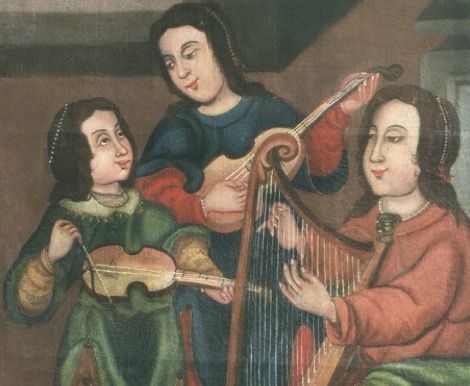Chinese vihuelist with players of vihuela de arco and harp screen.
Lisbon, Orient Museum.
instrument: vihuela de mano | century: 17cent | catalogue nº: 17-994

Artwork
Creator
Medium Artwork: Painting
Location
City China | Region | Old kingdom Asia
Characteristics
| Body Corners | Strings 3 strings | Neck Long | Pegbox Scroll |
| Bridge Tailpiece | Frets Yes | Back Flat | Pegs Lateral |
| Technique Plucked plectrum |
Commentary
ARTWORK
Panel of a painted Chinese screen (namban byōbu) in the Japanese Jesuit tradition, thought to have been painted in the 17th or 18th century, but based on earlier model. The illustration is on the fourth of the eight paels that constitute the screen. a photograph of the entire screen is at https://www.fomrhi.org/vanilla/fomrhi/uploads/bulletins/Fomrhi-120/, “Comm 1588.doc”. Van Ooijen speculates that the possible original painting is missing, but that the Jesuits might have taken it with them to Macao or Goa when they were forced to leave Japan in the first few decades of the 17th century (vanooijen2011-2).
INSTRUMENT
A vihuela with cornered waists being plucked by a Chinese (or Japanese) player. The instrument has all the indications of being a viola de arco, plucked with the fingers. No sound holes are visible and the bridge, largeley obscured by the post of the harp, appears very high on the soundboard, and curved in the manner of a bowed instrument. Three strings are clearly visible, the very narrow fingerboard is fretted, and finishes in a scroll pegbox with lateral pegs. The player appears to be holding a plectrum in his right hand. Everything suggests that this is an adapted copy of a fifteenth-century painting.
https://www.fomrhi.org/vanilla/fomrhi/uploads/bulletins/Fomrhi-120/